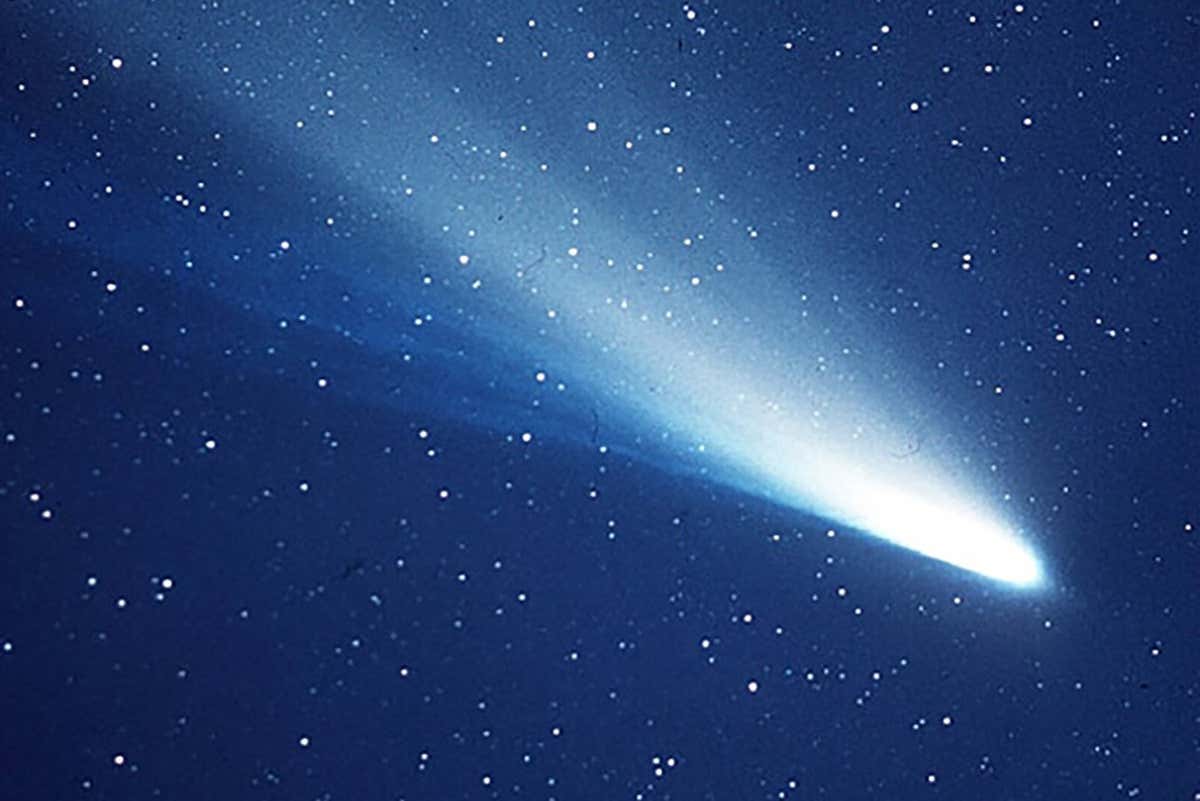The Orionids, seen over Daqing in Heilongjiang province, China, on 22 October 2020
Sipa US / Alamy
The Orionid meteor shower started this year on 2 October and will finish on 7 November, but its peak should be on the night of 21 October, with the brightest meteors in the early hours of the morning. It is one of the most reliably active annual meteor showers and should be visible across the world. As long as you can see the Orion constellation, also known as the hunter, you stand a good chance of a spectacular display. With the moon only partly illuminated during this period, around 20 meteors an hour should be visible in clear skies.
What are meteor showers?
Meteors are the flashes of light that occur when debris enters our atmosphere and heats up so rapidly that it emits intense bright light. They normally happen at random, but when Earth passes through a cloud of debris from a comet, many more meteors can be seen over consecutive days or weeks, depending on the size of the cloud.
Why are they called the Orionids?
The Orionids are named for the fact that they appear to come from the Orion constellation, but these faraway stars have nothing to do with the production of the meteors themselves. The flashes are actually pieces of debris from Halley’s comet, which visits Earth’s vicinity around once every 75 years and was last seen in 1986. While spotting the comet itself is a rare occurrence, Earth swings through its debris field every year.
How can I watch the Orionids?
You will be at the mercy of the weather to an extent. Assuming you have clear skies, try to find somewhere with minimal light pollution and avoid using a torch or the light from your phone so that your eyes adjust to the dark. The highest rate of meteors will be after midnight and before dawn.
Orionid meteors should be visible across the entire night sky, but they will appear to radiate from the Orion constellation because of the angle that Earth moves through the comet’s tail. Each meteor will only last a few seconds and will shoot across the sky — don’t get them confused with satellites, which will move smoothly across the sky for much longer periods.
How do I find Orion?
Orion is one of the easier constellations to spot because it is made up of many bright stars and is in line with Earth’s equator, which makes it visible from almost anywhere in the world for at least some parts of the year. In the northern hemisphere, you can see Orion from September, but it is most obvious between January and March.
The clearest feature of Orion is a straight line of three bright stars that form the hunter’s belt. These stars are called Alnitak, Alnilam and Mintaka, and are fairly evenly spaced and of similar brightness. Once you think you have found the belt, you can look for other bright stars that make up Orion, like Rigel, the sixth-brightest star in the sky, which should be at the bottom right in the northern hemisphere, or Betelgeuse, a faintly red star that will be at Orion’s top left shoulder in the northern hemisphere. In the southern hemisphere, their positions are flipped, with Rigel in the top left and Betelgeuse the bottom right.
Halley’s comet was last seen in 1986
NASA JPL/California Institute of Technology
What is Halley’s comet?
Halley’s comet is a 15-kilometre wide ball of dust and ice that passes by Earth roughly every 75 years. It is a short-period comet, defined as having an orbit around Earth that takes less than 200 years. The comet was last seen in February 1986, and it is due to return in July 2061.
Scientists think that comets like Halley’s originated in the far reaches of the solar system, such as in the icy Oort cloud. Over time, the gravity of the sun and the planets has pulled comets like Halley’s on an orbit towards the centre of the solar system.
Topics:
Checkout latest world news below links :
World News || Latest News || U.S. News
The post Orionids: How to see the Halley’s comet meteor shower this weekend appeared first on WorldNewsEra.

